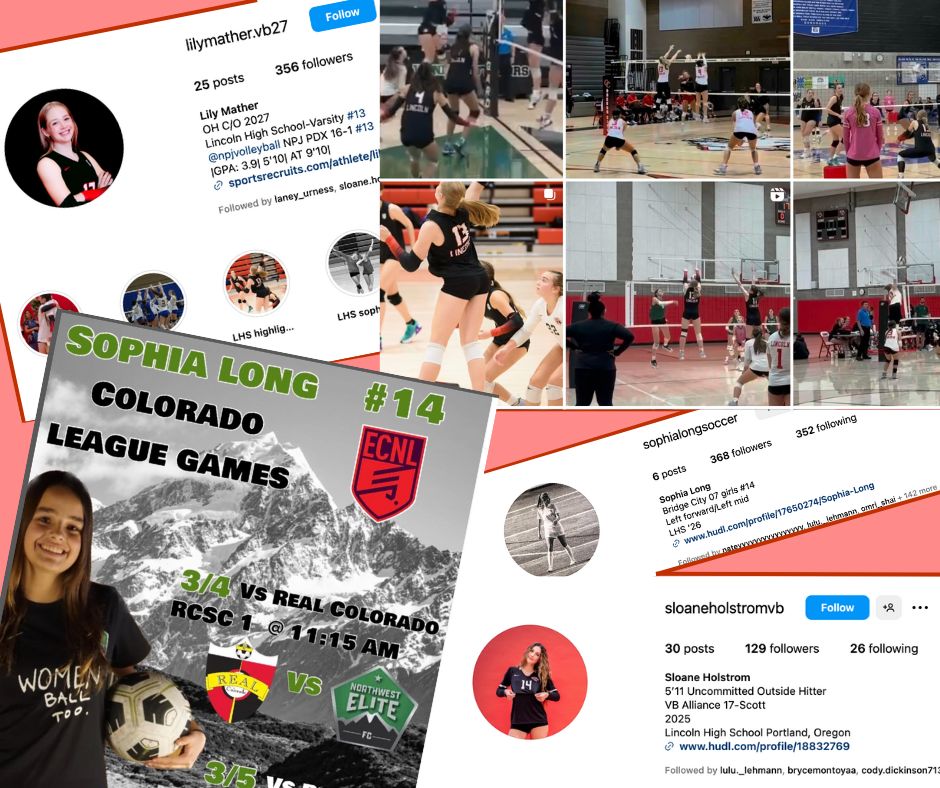According to NCAA statistics, over eight million students participated in high school athletics in the U.S. for the 2022-23 school year. Of those eight million, only 530,000 players moved on to compete at the college level with the National Collegiate Athletic Association (NCAA). The college recruiting process for high school athletes is long and competitive. The journey varies for each athlete, depending on age, gender and sport, but social media can play a valuable role across all recruiting systems.
According to the NCSA College Recruiting website, “A well-managed athlete social media presence can increase a coach’s interest in recruiting you.”
Sophomore Lily Mather created her Instagram athlete account for volleyball at the beginning of this year, and she uses it as a tool to showcase her skills and sporting events.
“I use [social media] to post my highlight reels from tournaments and also create a graphic of my tournament schedule,” said Mather. “That way the coaches who follow me can see exactly what court I’m on and what games I have that exact day […] It’s an easier way of exposure because everyone’s already on social media.”
Senior Sloane Holstrom also found social media to improve communication with colleges.
“ Before going to out-of-state camps for volleyball [in the hopes that a college coach will see you], you can DM [the coaches] and ask, ‘Hey, are you looking for this position?’ I’m not going to pay a bunch of money to fly somewhere if they’re not even looking for my position or my height,” said Holstrom.
In addition to sports-related content, Next College Student Athlete (NCSA) says that “coaches turn to social media to get a better understanding of a recruit’s personality and character.”
Junior Sophia Long, who has had an athlete account on Instagram for soccer since eighth grade, describes the importance of a well-rounded social media presence.
“ I feel like it’s easier for [colleges] to get a sense of who you are as a person if you do have a social media presence,” said Long. “Nothing ever has to be all flashy. You can have an equal daily life balance. You can have friends, and you can have sports, and you can have school and it’s not a problem to be able to showcase all of them because it’s healthy.”
Despite the benefits of exposure, social media can be harmful to an athlete’s mentality.
“I’ve seen people get negative comments on their posts, like ‘Why are you trying to get recruited in college? You kind of suck,’” said Mather. “That makes [your] self-esteem go down, so there’s some negativity on the platform.”
Mather, Long and Holstrom all agree that it’s best to start the recruiting process and develop a positive social media presence as early as possible.
“Don’t be afraid to get started. Even if you don’t think that your highlights are amazing or anything, just put them out there. Coaches can see you grow, and the more exposure you get when you’re a freshman or a sophomore makes it a lot easier because you want to start reaching out early and get on coaches’ radars,” said Mather.


